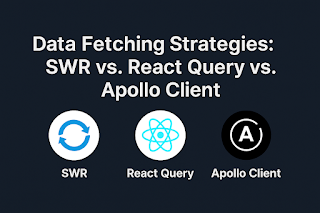WebSockets: Real-Time Communication for Front-End & Back-End
In today’s hyper-connected world, users expect real-time interactions—whether it's chatting with support, receiving stock updates, or tracking delivery in motion. Traditional HTTP was never built for this level of immediacy. Enter WebSockets—the game-changer for real-time, two-way communication between clients and servers.
What are WebSockets?
WebSockets are a protocol that enables persistent, full-duplex communication between the client and the server over a single TCP connection. Unlike HTTP, which is request-response based, WebSockets allow data to flow freely both ways without repeatedly opening new connections.
How WebSockets Work
- Handshake: It starts with an HTTP request to initiate the WebSocket connection.
- Upgrade: If the server accepts, the protocol switches from HTTP to WebSocket.
- Persistent Connection: Once established, both the client and server can send data at any time.
WebSockets vs. HTTP Polling

Use Cases of WebSockets
- Live Chat Applications
- Online Gaming
- Collaborative Tools (Google Docs-style)
- Real-Time Dashboards
- Live Sports Scores or Stock Tickers
- IoT Device Monitoring
Implementing WebSockets (Example)
Front-End (JavaScript):
const socket = new WebSocket('ws://localhost:3000');
socket.onopen = () => {
console.log('Connected to server');
socket.send('Hello from client!');
};
socket.onmessage = (event) => {
console.log('Message from server:', event.data);
};
Back-End (Node.js with ws):
const WebSocket = require('ws');
const wss = new WebSocket.Server({ port: 3000 });
wss.on('connection', (ws) => {
ws.send('Hello from server!');
ws.on('message', (message) => {
console.log('Received:', message);
});
});
Best Practices
- Authentication: Always authenticate WebSocket connections.
- Reconnection Logic: Implement client-side logic to reconnect on drop.
- Rate Limiting: Protect against DoS attacks with proper rate limits.
- Message Validation: Validate all incoming messages to avoid malicious data.
Final Thoughts
WebSockets open the door to a new level of interactivity and immediacy in modern applications. They are a must-have tool in any developer’s arsenal when real-time communication is a priority.
Whether you're building a collaborative editor, a real-time dashboard, or a chat app—WebSockets can make your app feel instantaneous, dynamic, and alive.
#WebSockets #RealTime #Frontend #Backend #JavaScript #NodeJS #API #LiveCommunication #FullStackDevelopment #WebDevelopment #TechBlog #AsyncProgramming #WebTech




Comments
Post a Comment